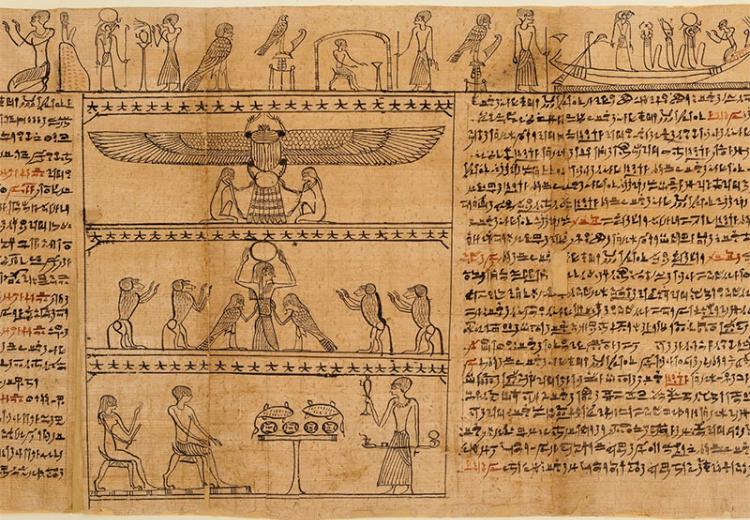Egyptian Symbols and Figures: Scroll Paintings

Scrolling through Imhotep's Book of the Dead.
This lesson introduces students to the writing, art, and religious beliefs of ancient Egypt through hieroglyphs, one of the oldest writing systems in the world, and through tomb paintings. Hieroglyphs consist of pictures of familiar objects that represent sounds. They were used in ancient Egypt from about 3100 BCE to 400 CE.
In the first part of this lesson, the class creates a pictorial alphabet of its own and then learns and uses the symbols of the Egyptian hieroglyphic alphabet. In the second part of the lesson, students identify and represent in their own drawings figures from the Book of the Dead, a funereal text written on papyrus and carved on the walls of tombs to help guide the deceased through the afterlife.
Guiding Questions
What are some ways people have used to communicate in the past and the present?
What writing systems have been developed in other cultures at other times?
What can tomb paintings tell us about ancient religious beliefs in Egypt?
Learning Objectives
Identify certain Egyptian hieroglyphs and recognize their meanings and uses
Become familiar with aspects of ancient Egyptian culture and religion and their relationship to hieroglyphs
Explain what a symbol is and use symbols to represent words and thoughts
Discuss different ways of representing ideas and conveying them to others
Understand the meaning and purposes of the Egyptian Book of the Dead
Identify ancient Egyptian gods and goddesses and explain their historical social and religious roles
